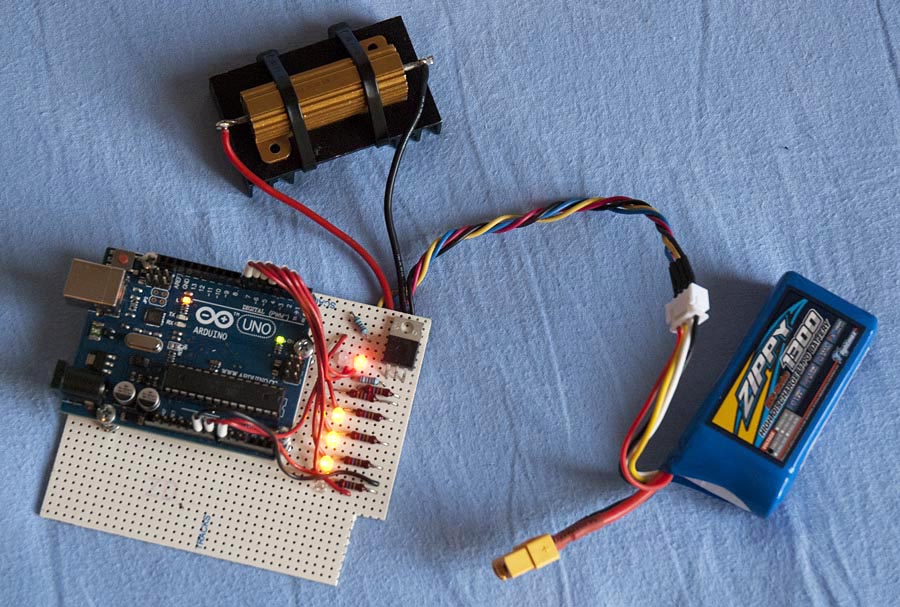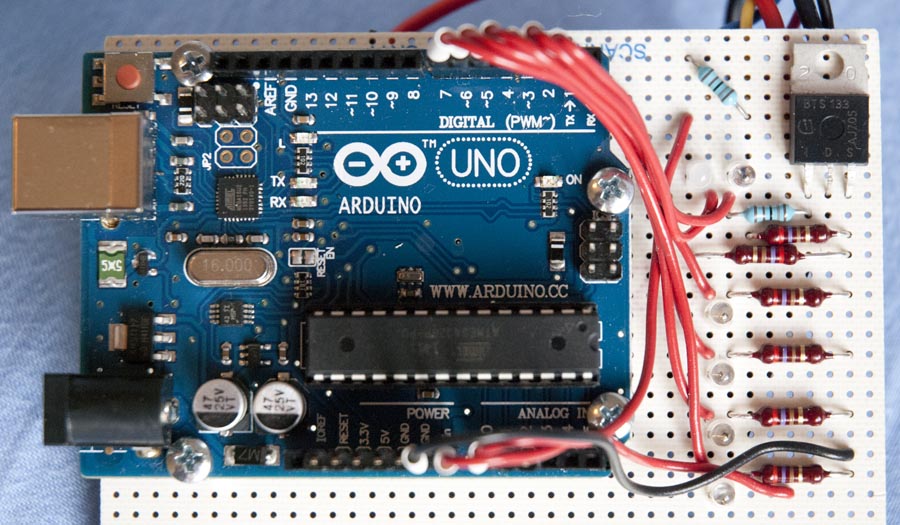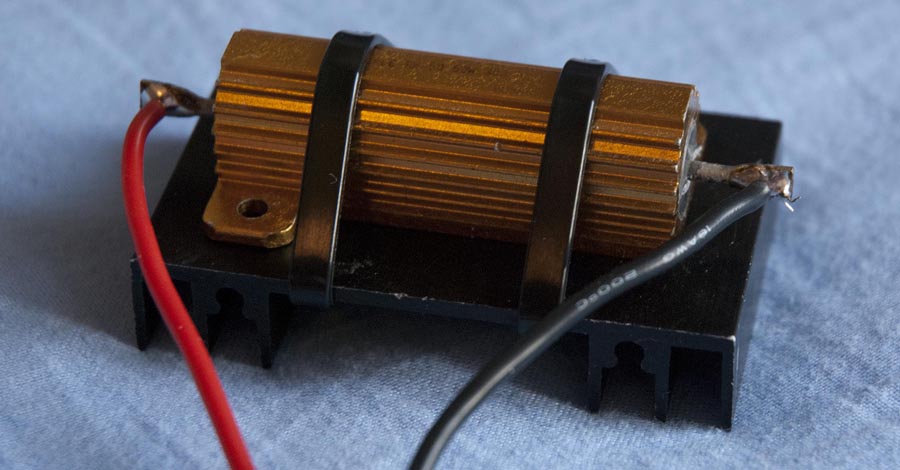
I use LiPo batteries in almost all my airplanes and multirotors. When those batteries are stored for a long time, for example during the winter, they should be around half charged. Each cell should be at 3.85V. I use mostly 3 cell batteries meaning the total voltage should be at 11.55V. I have never really cared about this before. But since correct storage voltage can extend the life span of the batteries, I thought I would give it a try. Most chargers do have a special storage mode but mine did not, therefore I decided built my own storage discharger.
This storage discharger assumes that the battery is close to fully charged when first connected. The Arduino and electronics is powered from the connected battery, therefore no external power is needed. When the battery is connected the voltage is measured and stored as a reference used to calculate the discharge progress. Only voltage of cell 1 is measured, I assume that all cells wave roughly the same voltage since I always balance charge my LiPos. This way I do not needs to use a voltage divider with two resistors that needs to be calibrated. The Arduino then switches on a load with a solid state power switch (BTS133). In my case the load is a 30R power resistor mounted to a heat sink, burning around 4W. The Arduino constantly monitors the battery voltage and shows discharge progress on a four LEDs. When 11.55V is reached, the load is switched off and a bright blue LED is turned on indicating is is done.
This is just a working prototype. It would be nice to mount it in an enclosure box and maybe add an LCD to show progress instead and a buzzer to sound when it is dune. Maybe I will do that later. Until then, it works very good as it is! I also need to add 2 cell support since have some of those batteries as well.
Arduino code download: lipoDischarger (1KB)


